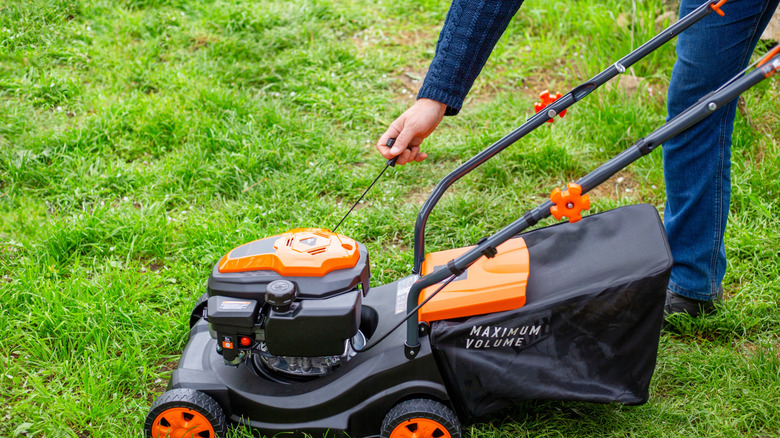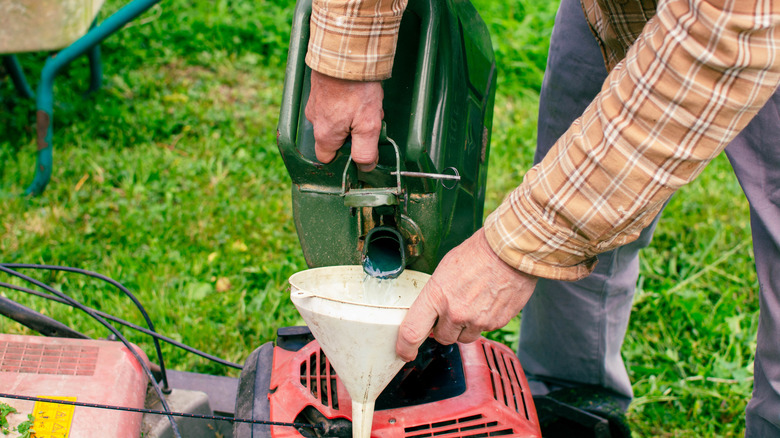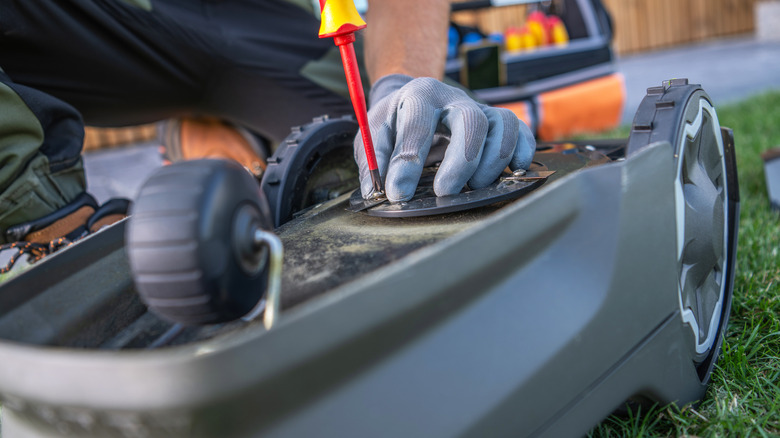The Long-Term Effects Of Using Regular Unleaded Gas In A Lawn Mower
Few things are more frustrating than pulling your lawn mower out for the season only to find it won't start, stalls mid-cut, or seems weaker than it used to be. You might think it's because your mower is getting old. But in reality, it often comes down to the common fuel mistake you're making that hurts your lawn mower. Gasoline changes over time, and the additives inside it can create problems that only show up after years of use.
The regular unleaded fuel most of us grab from the pump may be convenient, but it isn't always the best match for small engines like the one in your mower. Over months and seasons, that fuel can break down, absorb moisture, or wear on delicate parts inside the engine. The damage doesn't happen overnight, which is why it's easy to overlook. But the long-term effects are real, and they can leave you with costly repairs or a mower that simply won't keep up when you need it.
How regular unleaded gas impacts a lawn mower over time
Most small lawn mower engines are designed to handle clean, fresh unleaded gasoline. They'll also tolerate fuel with up to 10% ethanol (E10), which is what you'll find at most gas stations. Go beyond that, and you could be asking for trouble. Higher ethanol blends, like E85, can cause the engine to run poorly and even shorten its life. Older mowers are at a higher risk of malfunction. Alcohol blends and some modern fuel additives wear down rubber parts, gaskets, and even metal surfaces over time. Ethanol also acts like a cleaner as it loosens old gunk inside the fuel system. That sounds good, but in reality, those loosened deposits often end up clogging carburetors and fuel lines. As a result, you'll have a hard time starting your lawn mower, it might even stall, and you'll have to run for repairs you weren't expecting.
That's why knowing when you should be changing the gas in your lawn mower is just as important as the type of fuel you're using. The damage doesn't show up overnight. Small engine technician Sal Julian with Hector's Hardware in Buffalo shared with WIVB News that it builds slowly, year after year, as the fuel lines start to crack, seals dry out, carburetor parts harden, and suddenly your mower just isn't running the way it used to. But you can prevent most of these problems with a bit of care.
Best practices for protecting your lawn mower
You may not realize it, but the fuel type and how you store it have a big impact on how long your lawn mower lasts. Regular gas with up to 10% ethanol (E10) is pretty common, and it usually won't pull enough moisture from the air to cause issues. The real trouble starts when water gets into the tank from condensation or if the mower is left outside uncovered. That's when phase separation occurs, where water settles at the bottom of the tank, potentially leading to rust or engine problems. Most small engines have vented fuel tanks, which makes them even more vulnerable if they're stored in damp places. That's why it's smart to keep your mower in a dry area and avoid letting fuel sit for too long. Even regular gasoline breaks down after approximately 60 days if it is not stabilized.
For longer storage, draining the tank and carburetor is usually the safest way. You can use stabilizers or drying additives to keep fuel fresh. But if you're worried about ethanol specifically, there are alcohol-free stabilizers that can help. Even with good fuel care, some problems go beyond DIY fixes. Knowing the signs your lawn mower needs to go to a professional for repair can save you from an expensive repair. You can also switch to ethanol-free gas for your lawn equipment. While it usually costs a bit more per gallon, Sal Julian commented to WIVB News that you will notice that your mower starts more easily, runs more smoothly, and requires fewer repairs. Or, you could try using electric or battery-powered mowers, as they don't need gas, produce no emissions, run quieter, and require far less upkeep.


